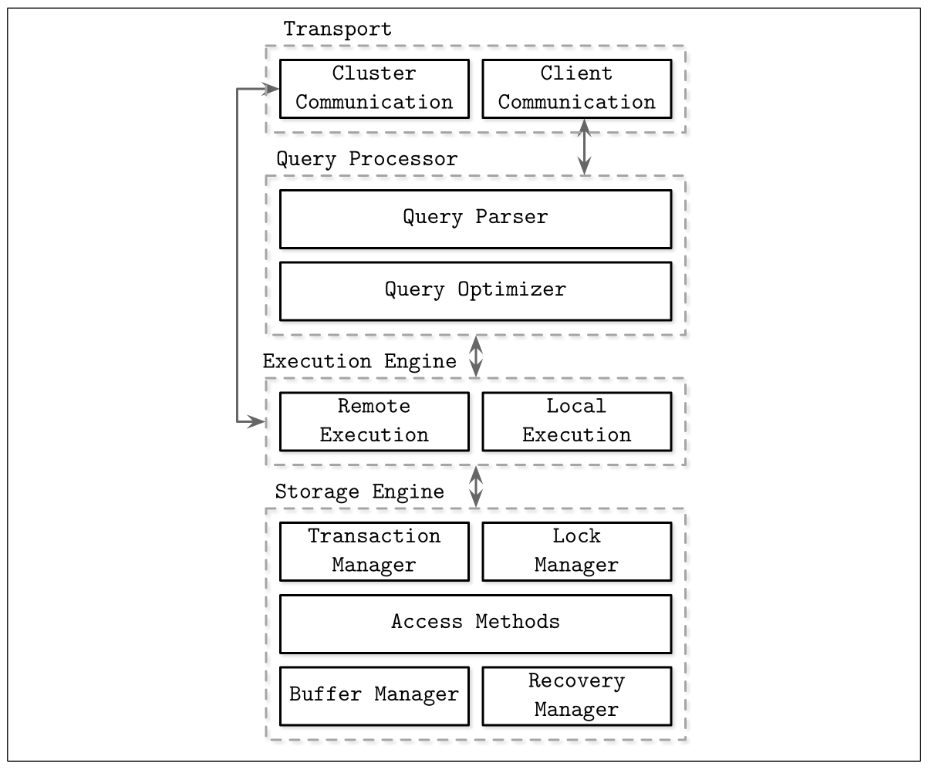Next: b-tree-basics
Storage Engines Introduction and Overview
Databases come in three general groups, based on the queries they run.
Online Transaction Processing (OLTP): large amounts of queries that are predefined, short-lived Online Analytical Processing (OLAP): complex aggregations used for analytics. Complex and long-lived Hybrid Transactional and Analytical Processing (HTAP): Run both OLTP and OLAP queries
The architecture of a DBMS might look like the following:

Memory Vs Disk-Based DBMS
Some databases which operate purely in memory have becoming more popular, due to the decrease in cost, and less complexity to implement in-memory versus on-disk data structures. 1
Column Vs Row Oriented DBMS
Most RDBMS’ are row-oriented, meaning each row is stored as a data unit. Some databases are column-oriented, where they store each column in an array. Most OLTP workloads prefer row-orientation, because they grab data horizontally, whereas OLAP workloads may grab certain parts of a record, and thus prefer column orientation. 2
Distinctions and Optimizations
Choosing data layout has a large impact in potential optimizations. For example, for time-series databases, which store very similar data, compression can save 95%+ of the memory costs of data. 3
Wide Column Stores
Wide column stores 4 represent data as a multidimensional map. Columns are grouped into column families, which store data of the same type, and data is stored row-wise. This is useless for storing data retrieved by key or sequence of keys.
This allows data to be fetched from hierarchical indexes. As well, column families store multiple versions of data by timestamp, which allows them to quickly locate higher-level entries.
Data Files and Index Files
A database file stores data to allow quick access. That means that
Next: b-tree-basics
Footnotes
-
Intel Optane (now discontinued) used to combine the properties of the fast access of RAM (~30 microseconds) with the durability of an SSD. It did not become very popular, however. ↩
-
Some examples of row oriented databases: MySQL, Postgres. Some examples of column oriented databases: Cassandra, Clickhouse. ↩
-
Facebook’s Gorilla DB was able to reduce every row of data (a 3-tuple of string key, 8-byte timestamp, and 8-byte floating point number) from 16 bytes to 1.37 bytes, about 12x compression on each row, by exploiting redundancy in nearby rows. ↩
-
e.g. BigTable and HBase ↩